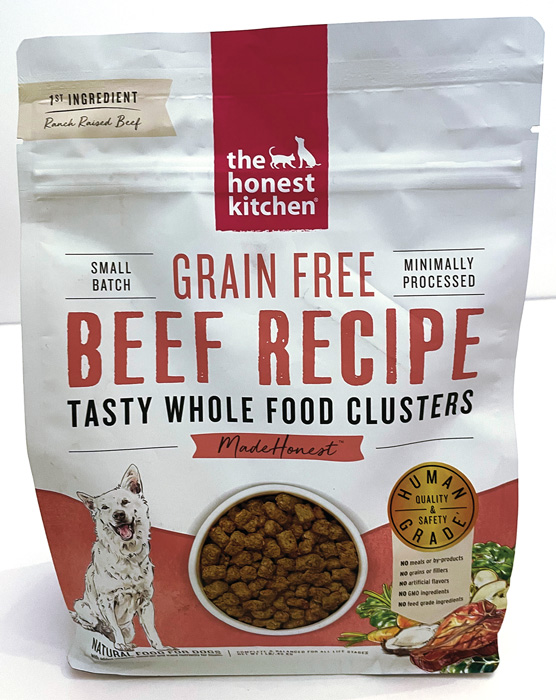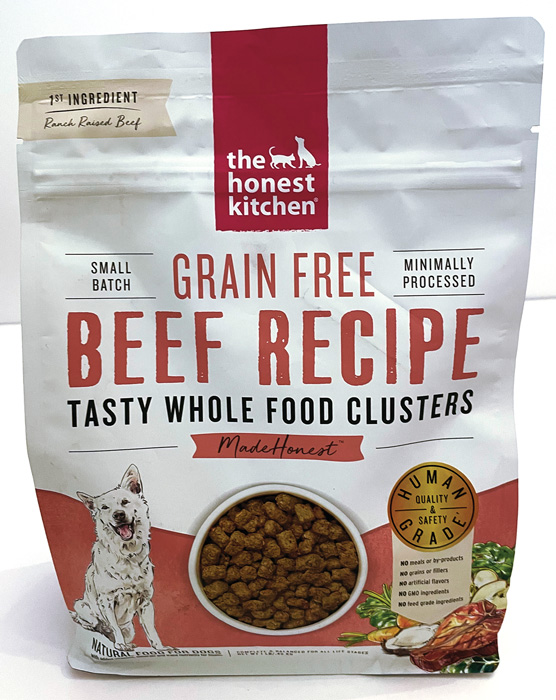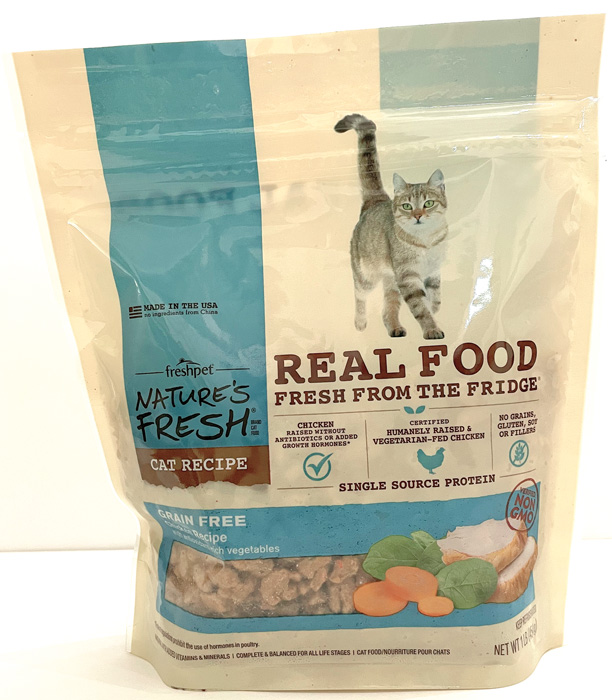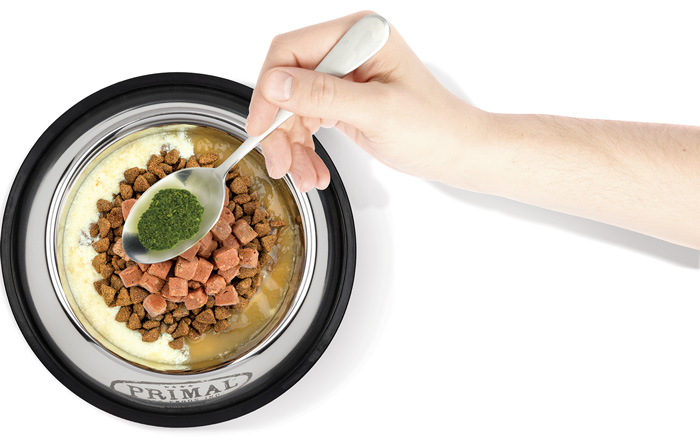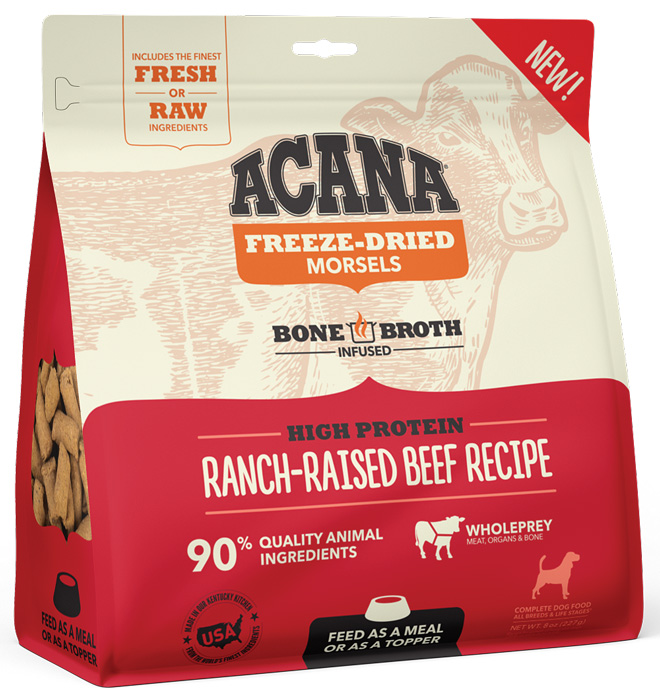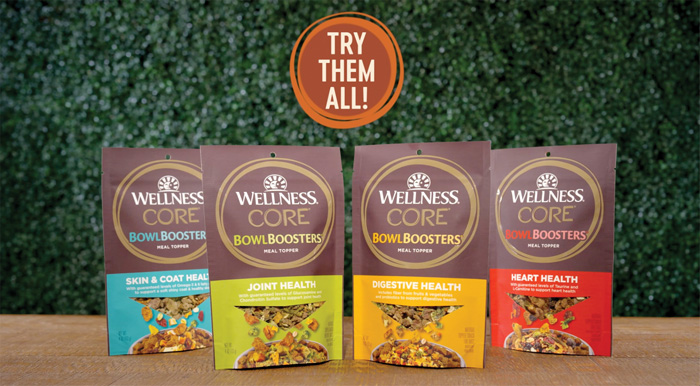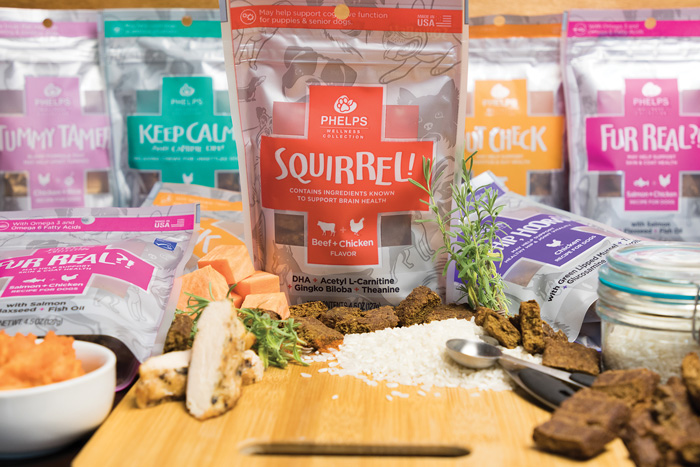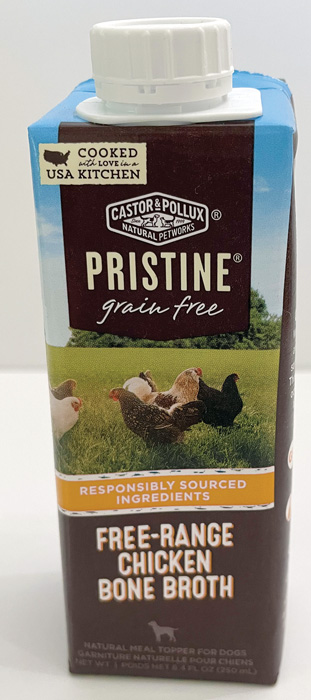
Feeding Pets Like People
Meal plan subscriptions, minimal processing, and a focus on fresh are among the trends making dog and cat food more and more like trendy human cuisine.
Article Content
Bone broth. Goat’s milk. Superfood bowls. Plant-based jerky. This may sound like the diet of the trendiest Gen Zer or millennial, but it’s actually a sampling of what’s available to today’s “pet parents,” who are lavishing as much attention on food for their canine and feline companions as on their own meals and snacks.
“Pets are considered full members of the family,” says Ouahiba Rabhi, research & development and animal nutrition consultant for Bio Biscuit, a dog and cat food manufacturer. “This leads many owners to reconsider all the factors that can improve the quality of life for their pets, including food. Pet owners are concerned about issues that may be directly or indirectly related to diet, such as obesity, urinary system problems, diabetes, allergies, and, most recently, dilated cardiomyopathy problems in dogs.”
Indeed, the concept of food as medicine has deep roots in the pet food industry, with Hill’s Pet Nutrition debuting Hill’s Science Diet in 1968. But the more recent tendency to anthropomorphize dogs and cats—coupled with ever-multiplying, social media–accelerated human food trends—has sparked abundant innovation in the pet food and treat space. As a 2021 Kerry white paper points out, more than 21,000 new pet food and treat products were introduced to the global market from 2017 to 2019.
In the United States, category growth has been strong in the past couple of years. U.S. pet food and treat sales increased 9.7% to $42 billion from 2019 to 2020, according to the American Pet Products Association (APPA). What’s more, more than 11 million U.S. households acquired a new pet during the COVID-19 pandemic, the APPA estimates (2021).
Dog and cat treats are a particularly dynamic subcategory. With more pet parents working from home during the pandemic, they’ve been spending much more time with their dogs and cats, treating them frequently. The latest human food crazes such as plant-based meat analogues and upcycled foods are having an even greater impact on pet treats than pet food because “the path to innovation is a lot quicker,” explains Rick Ruffolo, president and CEO of Phelps Pet Products, which manufactures dog treats. “When you change dog foods, that’s usually a big event. But with dog treats, it’s a decision people make every time they go to the store. It’s impulse-driven.”
Both dog and cat food and treats represent a rich realm of opportunity for product formulators. Here are seven human-to-pet crossover trends to harness.
1) Clean Label
As with human food, the demand for clean label dog and cat food is an overarching trend in which consumers expect use of natural rather than artificial ingredients, short ingredient decks, and a limited number of processing steps as well as the avoidance of certain common substances deemed problematic.
The Honest Kitchen is a prime example of a dog and cat food manufacturer specializing in clean label, free-from products. With its newest product line, Tasty Whole Food Clusters, which comes in both grain-free and whole grain varieties, the company avers that it is the first to make “human-grade” dry dog food, defined as legally suitable for human consumption. As the packaging for the grain-free beef recipe states, this means that the product contains no feed-grade ingredients and no meals or byproducts. The product also contains no fillers, artificial flavors, or genetically modified ingredients and features the claims “ranch-raised beef,” “minimally processed,” and “natural food for dogs.” Tasty Whole Food Clusters are mixed in small batches, cold-pressed, slow-roasted, and dehydrated, according to The Honest Kitchen.
As human food formulators know all too well, keeping up with consumer concerns can be a tremendous challenge, with even naturally derived substances frequently added to the free-from hit list. Used as an anti-caking agent, binder, and texturizer in pet food, as well as a key source of dietary fiber, powdered cellulose is one such ingredient; many people deride it as “wood pulp” or worse, “sawdust,” and have been especially riled about its use in Parmesan cheese. Beet pulp, the isolated fibrous material from sugar beets, is another ingredient under scrutiny.
“I’m a strong proponent of staying away from powdered cellulose if you can,” says pet food industry consultant Deena Krestel-Rickert, principal of Four Paws Solutions. “There’s another fiber source called Miscanthus grass that can be substituted for powdered cellulose, allowing the product to then be called ‘natural.’ Miscanthus grass can also be substituted for beet pulp, which tends to cause gas.” Krestel-Rickert points out that 13.5% of the content of Miscanthus grass consists of xylooligosaccharides, a prebiotic that feeds probiotics, which promote gut health.
2) Fresh, Refrigerated Food
Before the pandemic, shelf-stable human food had been losing ground for years to fresher supermarket offerings. Similarly, refrigerated dog and cat food has emerged as a growing segment, dominated by Freshpet, which was founded in 2006 and is still known for its standalone refrigerators in supermarket pet food aisles. As the company states on its website, Freshpet makes steam-cooked food for dogs and cats that undergoes pasteurization to make it safe for handling and serving. One notable product, Freshpet’s Nature’s Fresh Grain-Free Chicken Recipe for Cats is prepared using humanely raised fresh chicken and vitamin-rich peas and carrots, according to the company. “Single-source protein” is a prominent claim on the package.
Other key players in the fresh product sector ship products directly to consumers via their websites and primarily have meal plan subscription services that offer human-grade recipes and various levels of customization:
• The Farmer’s Dog provides customized recipes. (Information about the dog is required before viewing the recipes.)
• Nom Nom (for dogs and cats) has, among other recipes, a Pork Potluck meal for dogs that also includes potatoes, green beans, yellow squash, mushrooms, kale, and fish oil.
• Ollie (for dogs) features a turkey recipe with carrots, blueberries, and chia seeds; a beef recipe with sweet potatoes, peas, and rosemary; and a lamb recipe with butternut squash and kale.
• Spot & Tango (for dogs) offers a turkey and red quinoa recipe that also features spinach, carrots, peas, apple, eggs, parsley, apple cider vinegar, safflower oil, vegetable stock, vitamins, and minerals.
3) Raw Food
Human adherents of a raw food diet, which discourages the consumption of food heated to temperatures above 118˚F, tend to be vegans or vegetarians (who consume unpasteurized milk and cheese, as well as raw eggs), although some, such as “raw paleo” aficionados, do eat raw meat and seafood. In contrast, raw food diets for dogs and cats are primarily carnivorous. Raw food proponents (for both humans and pets) contend that cooking removes vital nutrients and that such a diet promotes long-term wellness.
Primal Pet Foods, which specializes in raw food for dogs and cats, uses high pressure processing, a cold-water pressure process, to destroy Salmonella and other potential foodborne pathogens. The company’s products are available frozen or freeze-dried.
“By skipping the high heat and processing required to make kibble, canned, and other processed foods stable, antioxidants and other important nutrients are retained and can improve digestion and skin and coat health, as well as make mealtime more enticing for picky pets,” says Emma Kumbier, Primal’s veterinary outreach coordinator. She notes that adding raw food to a pet’s diet doesn’t need to be an all-or-nothing proposition. “Upgrading or improving a pet’s meal doesn’t mean that anyone has to take drastic steps,” Kumbier maintains. “Our products are intended to be added to any meal.”
Among other items, Primal’s lineup includes Canine Raw Frozen Nuggets in beef, chicken, duck, lamb, pork, or quail; Chicken Bone Broth Meal Topper for Dogs & Cats; and goat milk flavored with organic blueberries, organic pomegranates, organic ginger, organic turmeric (for color), and so on. The newest products (for dogs and cats) are Butcher’s Blend Raw Toppers in six different meat or fish varieties and Fresh Toppers in three SKUs: Power Greens, Omega Mussels, and Awesome Squash. The company’s website has a “Build a Better Bowl” interactive feature in which users input information on the age, size, and current diet of their pet and receive suggestions for food and toppers.
4) Varied, Balanced Diet
Historically, humans have tried to include variety in their own diets but have had no qualms about serving their dogs and cats the same food day after day. But attitudes are changing. “People don’t eat the same meal day in and day out, and neither should our pets,” says Kathleen Blum, director of insights and strategy for Champion Petfoods’ Orijen and Acana brands. She notes that the freeze-dried and wet options for dogs and cats offered by Champion “can be fed as a whole standalone meal or as an enticing meal topper.”
Champion’s emphasis on variety and on meeting the needs of individual pets is reflected in the company’s six product launches this year, three of which are mentioned here.
Acana Freeze-Dried Food consists of bone broth–infused morsels or patties made with 90% of total protein from animal ingredients. Acana High-Protein Biscuits are made with just five simple ingredients, including nutrient-dense liver and sweet potato. Acana Premium Chunks Wet Dog Food contains 85% premium animal ingredients and 15% visible fruits and vegetables in a savory bone broth.
“Wet foods have been trending up, and we believe [this category segment] will have a larger footprint in the pet food space in 2022 and beyond,” says Blum.
5) Functional Food/Personalized Nutrition
The use of functional ingredients is a key trend that continues to grow in the dog and cat food category, as well as in food products for people. In a recent report on the impact of COVID-19 on the pet food category, Mintel shared the results of a study in which more than 1,400 adults were asked which health and wellness benefits they’d like to see in pet food and treats. The top priorities (with the percentage of respondents who indicated them) were healthy digestion (55%); muscle, joint, and bone support (51%); skin/coat health (46%); immune system support (45%); heart/cardiovascular support (36%); weight management (34%); and calming/anxiety relief (30%) (Mintel 2020).
“One major trend that is really starting to influence innovation is the shift in consumer preference toward outcomes-based nutrition,” says Greg Kean, vice president of innovation and product development for WellPet, which manufactures dog and cat food and treats. “This is about elevating food over simply being a source of calories but rather delivering on benefits that support pets being their best in terms of energy [and] healthy digestion.”
WellPet recently launched its Wellness CORE Digestive Health line of products in both dry kibble and canned wet food recipes for dogs and cats. According to the company’s website, the Paté Recipe for cats—available in chicken, turkey, whitefish, and salmon SKUs—features the following claims: high-quality protein and prebiotic fiber support digestive health; essential vitamins and minerals support immune health; omega-3 fatty acids help to nourish skin and coat; and superfoods such as pumpkin and papaya support digestive health.
Not long ago, WellPet also introduced its Wellness CORE Bowl Boosters—functional toppers for dogs in four varieties: Digestive Health, Heart Health, Joint Health, and Skin & Coat Health. The SKU to support joint health, for example, includes glucosamine and chondroitin sulfate, along with whole pieces of freeze-dried meats, fruits, vegetables, and wholesome grains.
“For hip and joint products, glucosamine and chondroitin are the go-tos, but there are other ingredients out there, including MSM [methylsulfonylmethane] and curcumin,” says Krestel-Rickert of Four Paws Solutions. “There’s another product I really like called FruiteX-B,” which is a plant mineral complex that contains the ingredient calcium fructoborate and is manufactured by Lief Labs.
In the past couple of years, Bio Biscuit’s Oven-Baked Tradition brand has debuted several functional kibble recipes for dogs and cats, including a semi-moist recipe featuring chicken or fish, formulated for dogs with tooth loss that find it difficult to chew solid food; dogs that tend to swallow food without chewing, which can cause gastrointestinal problems; and dogs that are picky eaters. “Soft and chewy food has a more pronounced taste and flavor and enhances palatability of the product, making it easier for difficult dogs to eat their ration,” explains Rabhi.
Bio Biscuit has also added a fresh fish recipe for large-breed adult dogs that have intolerances or allergies to chicken protein, as well as a urinary care cat food that, among other things, has controlled levels of magnesium and phosphorus.
Functional treats are gaining in popularity as well. Phelps Pet Products has a new Wellness Collection line for dogs that features six products, including the following three items: Squirrel! (a beef-
and-chicken-flavored product, with acetyl-L-carnitine, gingko biloba, L-theanine, and other ingredients to support brain health); Keep Calm and Canine On! (chicken-flavored “relaxing chews for unsettled dogs” that contain L-theanine, passionflower, and chamomile); and Gut Check (a lamb recipe, with apples, pumpkin, and chicory root).
6 ) Plant-Based/Vegan
Bio Biscuit’s Oven-Baked Tradition brand has even launched a vegan adult dog food, designed to meet the needs of “a market that adheres to the vegan philosophy” and dogs that have allergies to animal proteins, Rabhi points out. The main ingredients in this product are lentils, oats, peas, barley, pea protein, and organic hemp seeds, which she describes as “diversified vegetable protein sources for a balanced vegan diet.” (Because cats are obligate carnivores, there are few vegan cat food lines or products, but they do exist.)
While canine plant-based offerings are on the rise, dogs, like humans, are far more likely to be on a flexitarian rather than a vegetarian or strict vegan diet, observes Ruffolo, who notes that Phelps Pet Products was the first company to come to market with a plant-based jerky. By choosing a plant-based treat for their dogs, flexitarian pet parents feel that they are making a good choice in the same way they do when they have an Impossible Burger, he says.
WellPet manufactures a plant-based treat for dogs called Whimzees, which decreases tartar and plaque and helps reduce halitosis, says Kean. “This product is based on potatoes as the main ingredient,” he notes. “But we are doing some experiments with other types of ingredients that will give us different outcomes in terms of different textures.”
7) Sustainable and Humane
Consumers’ growing penchant for food products that are in some way environmentally sustainable is an all-encompassing trend (just like clean label) for both human and pet food. Using upcycled ingredients that would otherwise have been thrown out in order to reduce food waste is one aspect of eco-conscious consumption. In partnership with Disney, Phelps just launched the Table Scraps Disney Collection of upcycled dog treats, which includes eight SKUs—including “a couple that are plant-based, a couple that are organic, and a couple that have superfoods,” Ruffolo says. Each item is tied to a Disney media franchise such as 101 Dalmatians, Toy Story, and Finding Nemo.
“Purposeful pet food” manufacturer Castor & Pollux has developed a line of dog and cat food called Pristine, which features responsibly sourced ingredients, including cat food recipes with wild-caught salmon and wild-caught whitefish, as well as dog food recipes with free-range chicken, turkey, or duck. One small Pristine SKU on the shelf at a Chicago-area Whole Foods Market caught this writer’s eye: Free-Range Chicken Bone Broth.
Premium Proliferation
One thing is clear: Pet parents seem to be willing to spend more on premium food for their dogs and cats than they do on food for their human family members. But consumers who are struggling financially as a result of the pandemic may need to make tough choices. That said, as Mintel states in its Impact of COVID-19 report, “The proliferation of more premium brands across all retail channels and price points over the last decade may actually make it easier for pet owners to move down a notch or two in price without feeling like they are making a big compromise in quality.”
REFERENCES
Anonymous. 2020. “Pets Remain in High Demand During COVID.” Today’s Veterinary Business, Oct.
APPA. 2021. “National Pet Industry Exceeds Over $100 Billion in Sales for First Time in Industry History.” Press Release, March 24. American Pet Products Assoc., Stamford, Conn. ampericanpetproducts.org.
Kerry. 2021. Pet Food with a Purpose: How to Win with Functional Pet Nutrition. https://kerry.com/Insights/Resources/Pet-Food-with-a-Purpose-Download.
Mintel. 2020. Pet Food: Inc Impact of COVID-19, U.S. Executive Summary. Aug. Mintel Group, Chicago. mintel.com.

